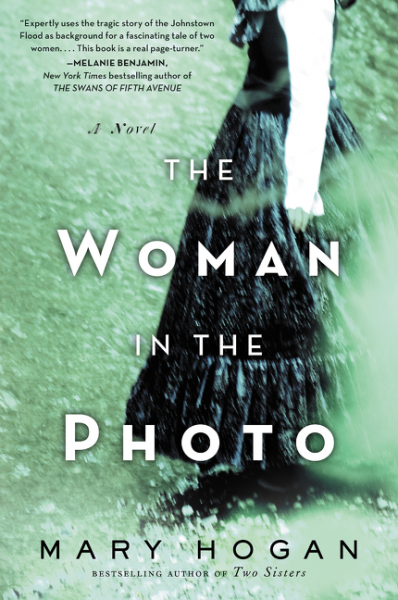
THE WOMAN IN THE PHOTO
In this compulsively-readable historical novel, from the author of the critically-acclaimed Two Sisters, comes the story of two young women—one in America’s Gilded Age, one in scrappy modern-day California—whose lives are linked by a single tragic afternoon in history.
1888: Elizabeth Haberlin, of the Pittsburgh Haberlins, spends every summer with her family on a beautiful lake in an exclusive club. Nestled in the Allegheny Mountains above the working class community of Johnstown, Pennsylvania, the private retreat is patronized by society’s elite. Elizabeth summers with Carnegies, Mellons, and Fricks, following the rigid etiquette of her class.
In this compulsively-readable historical novel, from the author of the critically-acclaimed Two Sisters, comes the story of two young women—one in America’s Gilded Age, one in scrappy modern-day California—whose lives are linked by a single tragic afternoon in history.
1888: Elizabeth Haberlin, of the Pittsburgh Haberlins, spends every summer with her family on a beautiful lake in an exclusive club. Nestled in the Allegheny Mountains above the working class community of Johnstown, Pennsylvania, the private retreat is patronized by society’s elite. Elizabeth summers with Carnegies, Mellons, and Fricks, following the rigid etiquette of her class. But Elizabeth is blessed (cursed) with a mind of her own. Case in point: her friendship with Eugene Eggar, a Johnstown steel mill worker. And when Elizabeth discovers that the club’s poorly maintained dam is about to burst and send 20 million tons of water careening down the mountain, she risks all to warn Eugene and the townspeople in the lake’s deadly shadow.
Present day: On her eighteenth birthday, genetic information from Lee Parker’s closed adoption is unlocked. She also sees an old photograph of a genetic relative—a 19th Century woman with hair and eyes likes hers—standing in a pile of rubble from an ecological disaster next to none other than Clara Barton, the founder of the American Red Cross. Determined to identify the woman in the photo and unearth the mystery of that captured moment, Lee digs into history. Her journey takes her from California to Johnstown, Pennsylvania, from her present financial woes to her past of privilege, from the daily grind to an epic disaster. Once Lee’s heroic DNA is revealed, will she decide to forge a new fate?
- Willam Morrow Paperbacks
- Paperback
- June 2016
- 432 Pages
- 9780062386939
About Mary Hogan
Mary Hogan is the NAPPA Award-winning author of seven young-adult books and the bestselling author of the novel Two Sisters. She lives in New York City with her husband, Bob, and their dog, Lucy.
Praise
“Mary Hogan expertly uses the tragic story of the Johnstown Flood as background for a fascinating tale of two women, generations apart, who defy expectations to find their own paths to happiness and purpose. Awash in historical detail, this book is a real page-turner.” — Melanie Benjamin, New York Times Best Selling author of The Swans of Fifth Avenue and The Aviator's Wife
“A fascinating snapshot of two women separated by time—each compelling in her own right – who together make for a novel so appealing you can’t stop reading. Well-researched history and modern intrigue, original and heartfelt…. a thoroughly captivating novel” — New York Times Bestselling author MJ Rose
“a wonderful story of two young women coming into their own. […] a beautiful work of historical fiction […] Hogan does a brilliant job at weaving their two stories together to make one fabulous novel about growing up and discovering who you are in more ways than one.” — NY Daily News
Discussion Questions
In what way, if any, do the events leading up to the Johnstown Flood resonate today?
One of the major themes of the book is the question “Is biology destiny?” Do you believe
you are born to be the person you are meant to be? Or, can fate be shaped by human
will?
If you were the product of a closed adoption (sealed records) would you try to identify
your birth parents? If so, why?
Should the members of the South Fork Fishing and Hunting Club— essentially a
timeshare—have been held legally accountable for the Johnstown disaster?
In 1889, a person’s clothes instantly identified his or her class. Do you think it’s the same
today? Or are there other “class” identifiers that we use to judge people?
How many similarities between Elizabeth Haberlin and Lee Parker can you name?
Did Clara Barton become the historical figure she became because of her upbringing or
in spite of it?
How did the confines of class affect the Haberlin family?
In a society where men held all the positions of power, in what ways did the women of
this story make a difference?
